Are you looking for the best Kilimanjaro packing list? You’ve come to the right place!
I spent hours researching what to pack for Kilimanjaro climb, second-guessing every decision.
The more I read, the more questions I had.
In this comprehensive packing list for Kilimanjaro, you’ll not only find what you need to pack but also what you can leave behind.
It’s the perfect Kilimanjaro packing list for women (and men) and includes tips and tricks that will come in handy, no matter which route you choose.
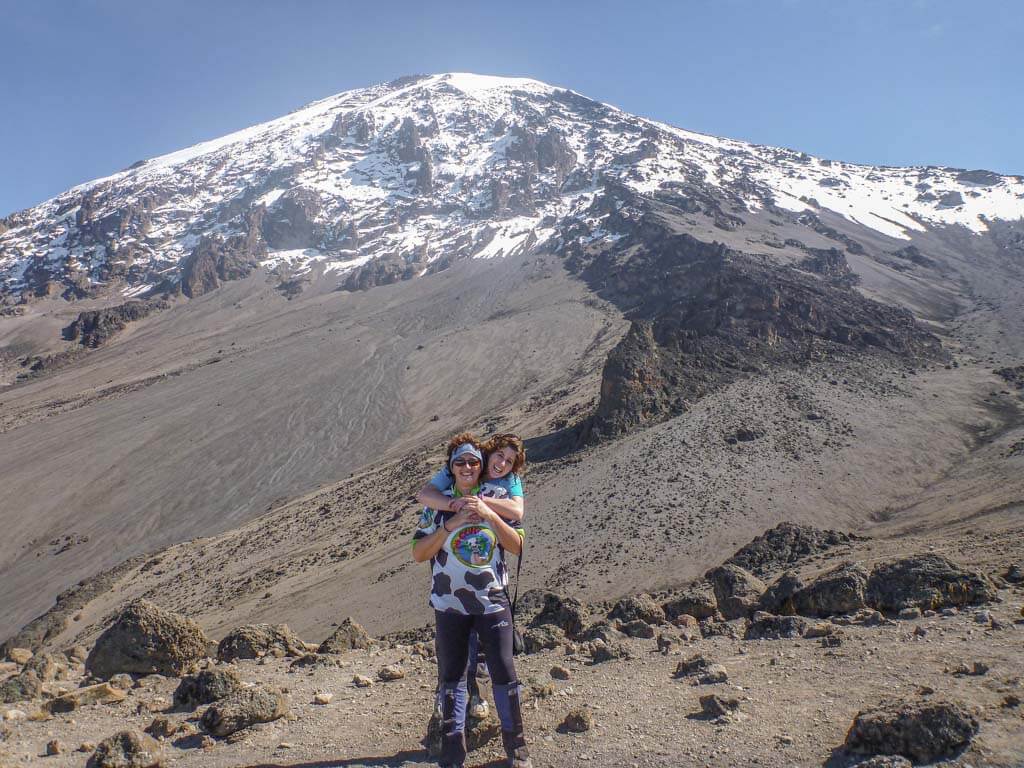
Torn Tackies contains affiliate links. If you make a purchase using one of these links, I may receive compensation at no extra cost to you. See my disclosure for more information.
Quick Navigation
Mount Kilimanjaro Packing List: What You Need to Know
If there’s one thing I learned during my 7-day Machame trek, it’s that your clothing for Kilimanjaro can be the deciding factor as to whether you make it to the top or not.
I’m not going to beat around the bush. I struggled with my Kilimanjaro climb.
With the terrain constantly changing, fluctuating temperatures, and lower levels of oxygen, my body began to pay the price.
Altitude sickness got me good, and I was absolutely freezing cold on my summit climb. So much so that I nearly turned back (spoiler alert, I summited Kili).
If there’s one regret I have, it’s not investing in a good pair of gloves.
And to think that I nearly didn’t make it because of a pair of gloves!
So, take my advice when packing for Kilimanjaro climb.
You’ll be pushed to your limits, exhausted from hiking nonstop and clinging to your comfort levels. This is the one thing you can prepare for.
Because high altitude trekking is a whole different ball game, and if you don’t come prepared, it could be fatal.
If you haven’t read it yet, check out my post on 10 things you need to know for your Kilimanjaro trek.
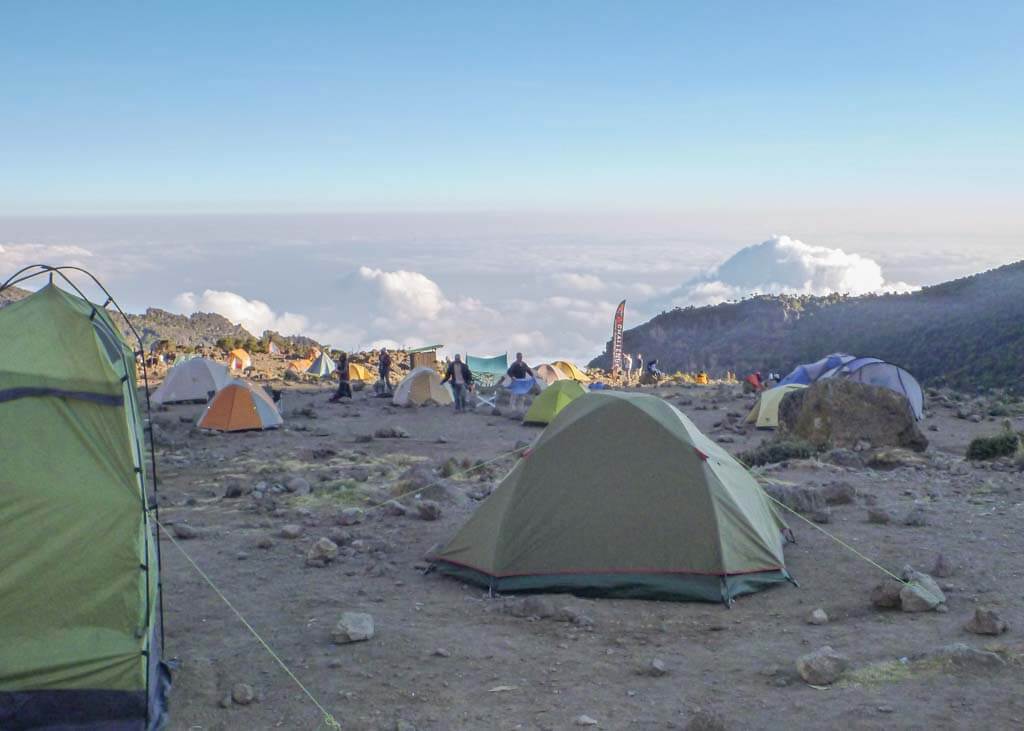
Clothing for Kilimanjaro: Upper body
Base layer: 1 long thermal top
Thermals are an essential base layer that you’ll need to include in your Kilimanjaro climb packing list.
I recommend you pack 1 pair like this. But if you’re climbing Kili during the colder months and you’d prefer to have a pair for trekking and another for sleeping, then bring an extra thermal top with you.
The first 4 days of my trek were moderately warm, so I only used my thermals in the evening and during my summit climb.
2 Short Sleeve Hiking shirts
Short-sleeve tops, like what you’d exercise in back home, are great to hike in.
These should be part of your Kilimanjaro gear for the first day.
The temperatures are generally warm at the start of your trek as well as on the last day when you return to Moshi.
1 long sleeve lightweight hiking top
Layering is important so that you can easily adjust to temperature changes.
A lightweight long-sleeve top like this is a must-have that you can keep in your day pack. Pop this over your short-sleeved hiking top if the weather changes.
1 mid-weight warm hiking top
I noticed a considerable drop in temperature after day 4 and during the evenings of my trek.
This is when you’ll be relieved that you found my Kilimanjaro packing list and included this mid-weight hiking top. It’s not overly warm, yet provides that extra comfort.
I wore mine at camp over my sleeping thermals and as an extra layer on these cold hiking days.
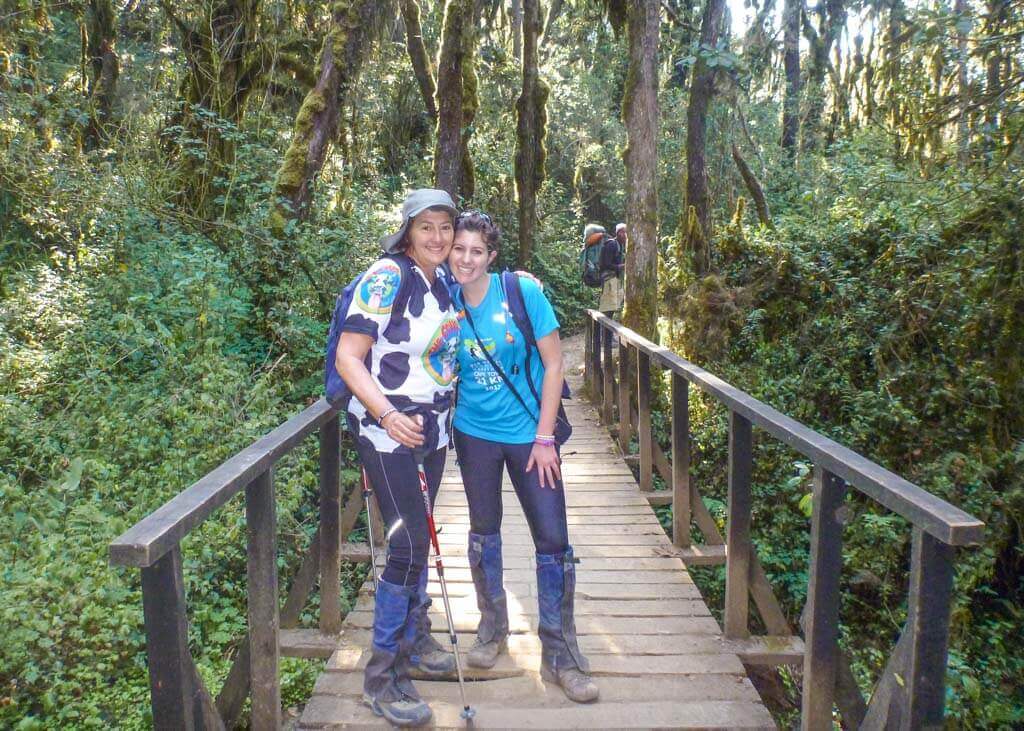
1 fleece jacket
You’ll need a warm fleece top as you head higher up the mountain. It’s also a must-have for summit night.
Go for a zip-up option like this as it’s easy to put on and take off.
Mine also had zip-up pockets, which were great as I could keep my camera or tissues inside.
Depending on the weather, you can wear your thermals and long-sleeved hiking tops underneath.
1 mid-weight down feather jacket
This was the best investment, not only for your Kilimanjaro hike packing list but for life in general!
I wore mine all the time – either over my fleece and thermals or under my windproof jacket for summit night.
1 Waterproof jacket with hood
The weather can be unpredictable. You could have perfect conditions and sunny skies every day.
But it may also be rainy with gusts of wind. It’s best to be over-prepared when deciding what to pack for Kilimanjaro.
This windproof jacket acts as an outer shell, and it should be slightly bigger so that you can wear it over all your layers.
Top tip: Don’t worry about buying a jacket with a warm inner lining, as you’ll wear your base and middle layers underneath.
1 rain poncho
Ponchos are light and small and will keep you and your backpack dry if it rains.
They don’t take up too much space and are relatively inexpensive, so I recommend you add this to your packing list for Kilimanjaro.
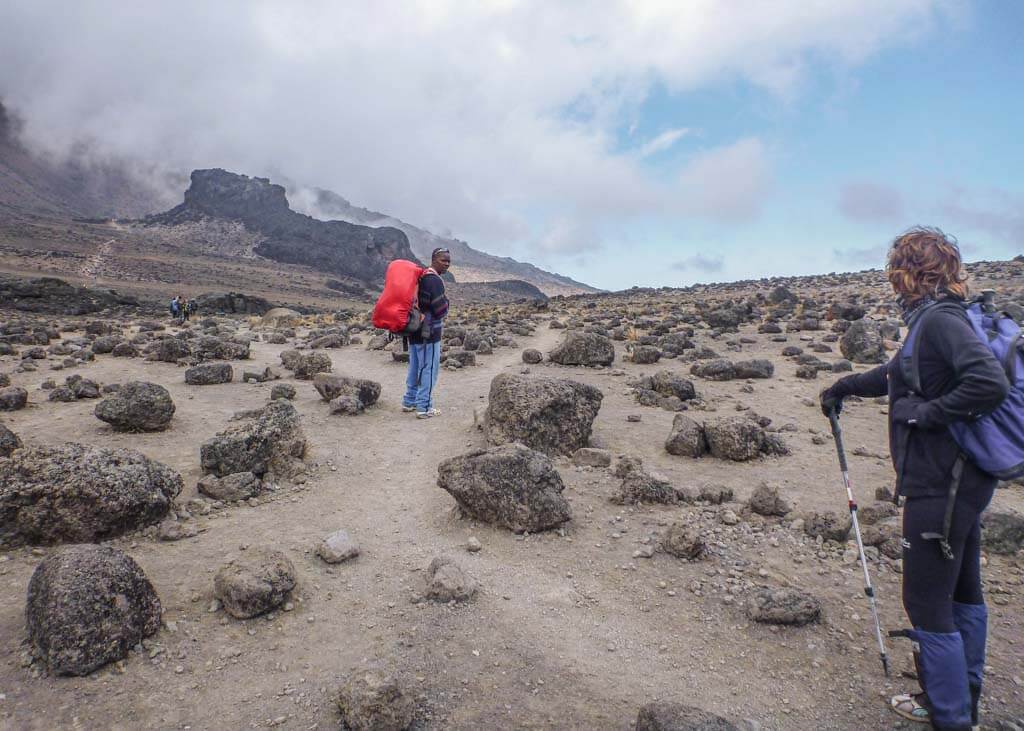
Clothing for Kilimanjaro: Lower Body
Base layer: 1 long thermal pants
As with the base layer for your upper body, you’ll need 1 pair of thermals for your lower body.
You’ll sleep in these, and they will be your base layer for your summit climb.
If you’re prone to the cold and want to pack in a second pair so that you have one for hiking and a separate pair for sleeping, then go for it.
Hiking pants for women: 2 long yoga pants (tights)
Yoga pants are a great alternative to hiking pants for women as they are stretchy and more comfortable.
I wore these yoga pants on the first 3 days of the trek.
On summit night, I wore them over my base layer (thermals) and under my thicker hiking pants.
Hiking pants for men: 2 hiking pants
These lightweight, thin hiking pants are great to hike in.
I chose to wear yoga pants instead of hiking pants, but you can pack either one or the other.
Some hiking pants have a zip that allows them to convert into shorts, but the material is super breathable anyway, so shorts are not necessary.
Because these pants are made of a breathable material, they won’t provide much warmth on colder days. Wear your thermal base layer underneath if the temperature drops.
Warm hiking pants: 1 waterproof trekking trousers
The summit climb to Uhuru Peak on Mount Kilimanjaro is freezing cold!
You’ll need a pair of warm, waterproof pants like these that you can wear over your base layer and yoga pants (hiking pants).
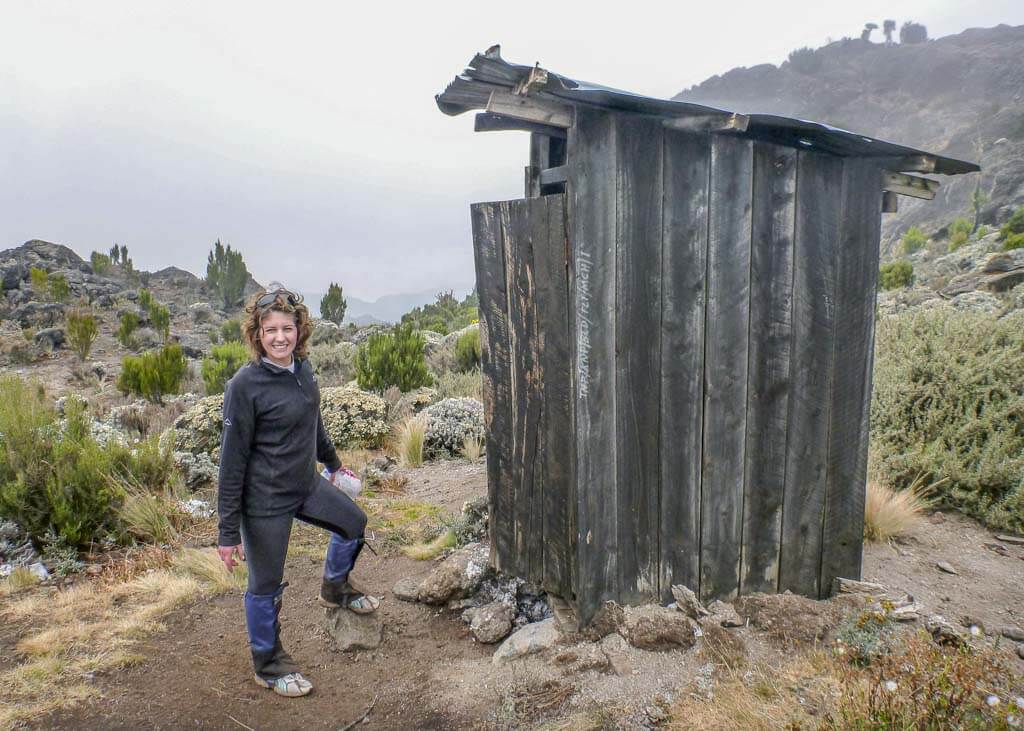
Clothing for Kilimanjaro: Headgear
1 sunhat
During the first day of your trek, you will be hiking through beautiful, lush forests.
But once you pass the tree line, it becomes hot and barren, and you’ll need a sun hat.
1 beanie/warm hat
From day 3 onwards, you’ll wear this warm hat in the evening at camp and also on your summit climb.
1 thick buff
Buffs act as a scarf and keep your face warm on those chilly nights.
This thick buff is for those cold nights at camp, and you’ll also need it for your final summit climb up Kilimanjaro.
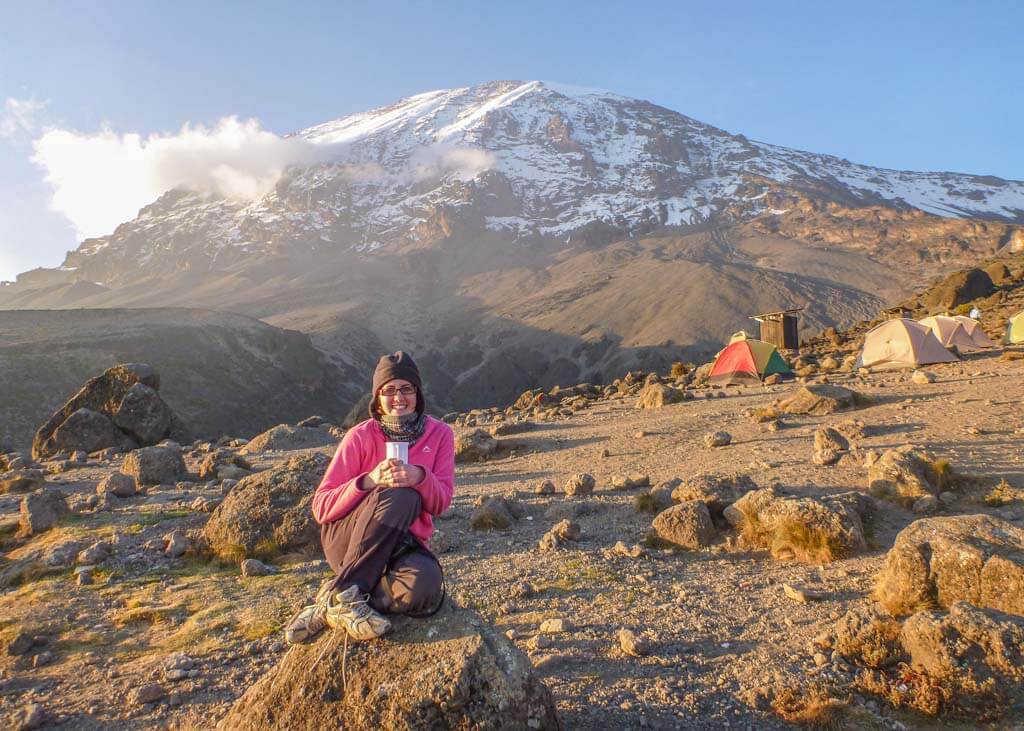
Mt Kilimanjaro Packing List: Hands
1 glove liners
Thin glove liners are the best!
These ones aren’t too thick, and they provide an extra layer of warmth. You can still do tasks such as tying shoelaces or taking photos (Get the touchpad-friendly option for this).
1 fleece gloves for Kilimanjaro
I wish I had included these fleece gloves on my packing list for Kilimanjaro climb!
Yep, fleece gloves.
While you’ll most likely wear your glove liners when you’re at camp, these fleece gloves are crucial for your summit climb.
Wear them over your glove liners and under your thicker hiking gloves.
1 water-resistant hiking gloves
Thick, water-resistant gloves like these are needed for the summit climb because it will be freezing cold up there!
They don’t need to be too thick, but make sure they fit you properly so that you can wear your glove liners and fleece gloves underneath.
Note: The first 4 days are relatively normal, and you won’t need to pack any special hiking gear. But it’s the 12-hour summit climb that requires warm, thick clothing for Kilimanjaro.
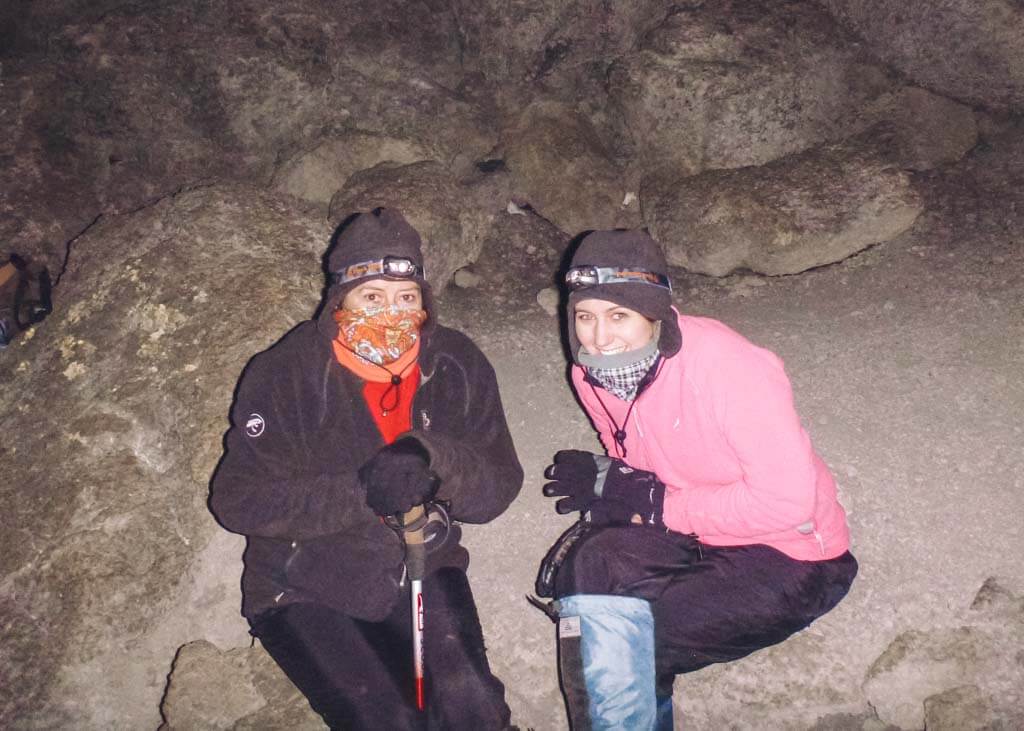
Kilimanjaro kit List: Feet
1 hiking boots
A good pair of hiking boots must be included in your packing list for the Kilimanjaro climb.
These should be Gore-Tex waterproof and lightweight with a good grip. But most importantly, they need to be comfortable.
The summit trail is rocky, uneven, and can be slippery in some areas, so the extra ankle support makes a big difference.
Also, having a higher boot prevents stones and dirt from getting into your shoes.
Truth be told, I only wore my hiking boots for the summit climb! Was it worth investing all that money in boots for the summit climb only?
I’m not sure! I had perfect weather conditions, and trail shoes would have been fine.
But, had it been raining or if there was snow on the mountain, then hiking boots would have been 100% necessary.
1 trainers/trail shoes
I wasn’t expecting to hike in my trainers for the first 4 days. But I did!
I packed them in so that I had something comfortable to wear when walking around camp (which is why you should pack trainers in too).
But, after hiking in them for the first day, I decided to continue wearing them as they were so comfortable.
You can wear your trainers and keep your hiking boots in your day pack as a backup.
If it starts to rain and the trail gets muddy, you will need to switch to your hiking boots.
Gaiters
Gaiters are a protective shell that straps onto your leg above your hiking boots.
They prevent sand and stones from getting into your boots, and they’re necessary – unless you plan on wearing your hiking boots every day.
Because I wore my trainers for most of the trek, I’m glad I had gaiters so that mud couldn’t enter my shoes.
If you’re trekking during the colder months and you expect snow, I recommend that you include a pair of gaiters in your Kilimanjaro gear list.
1 warms socks for camp
After a long day of hiking, your feet are going to need some TLC!
Keep a pair of socks that you’ll only use in the evenings at the campsite.
3 thick trekking socks
Good quality trekking socks like these are a must on every Kilimanjaro packing list.
You’ll spend over 10 hours a day on your feet, so your socks should be thick and provide support and comfort.
Merino wool socks are a favorite as they’re breathable, quick-drying, and won’t absorb odors. But while they are superior, they are also costly.
I used normal trekking socks, which are a lot cheaper and did the job just fine.
n your summit night, I suggest you wear two of these thicker trekking socks.
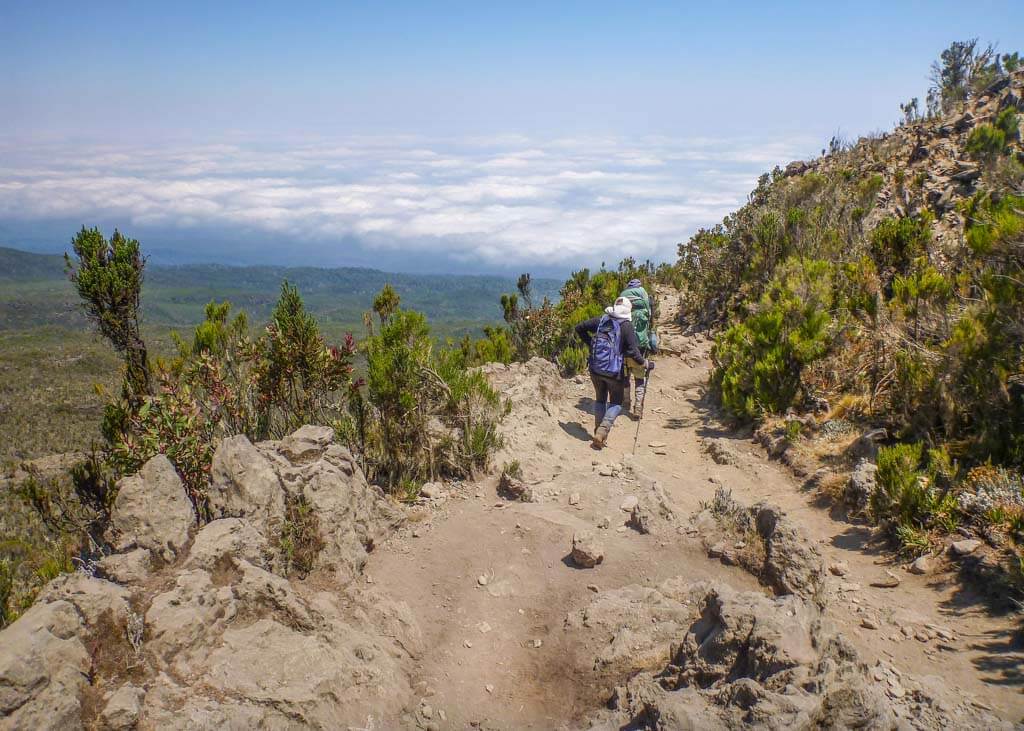
Packing list for Kilimanjaro: Toiletries
Factor 50 sunscreen
You’re spending long days outside. Even though it gets cold and cloudy, the sun is harsh, and you can get extremely burnt.
Make sure to buy sunscreen before you arrive in Tanzania.
Wet wipes
You will use 3 or 4 per day for your “wet wipe shower,”.
Pack 1 big pack with at least 35 wet wipes.
Keep a smaller pack in your daypack with about 15 wipes that you can use while trekking.
Hand Sanitizer
Hand sanitizer is great for when you’re on the go.
You’ll want something that is easily accessible and fits into the mesh pockets of your day pack.
READ MORE: WHAT TO PACK FOR EVEREST BASE CAMP
Toilet paper
While your guide will have a roll or two, pack an extra one just in case.
Also, if you have the budget for it, I highly recommend requesting a portable toilet.
2 Small packs of tissues
My nose was running all day, every day!
Keep these tissues in your day pack because you’ll need them.
Other toiletries
- Toothbrush
- Toothpaste
- Small mouthwash
- Roll-on deodorant
- Lip balm (with sunscreen)
- Hair ties and clips
- Mosquito repellant
- Small moisturizer
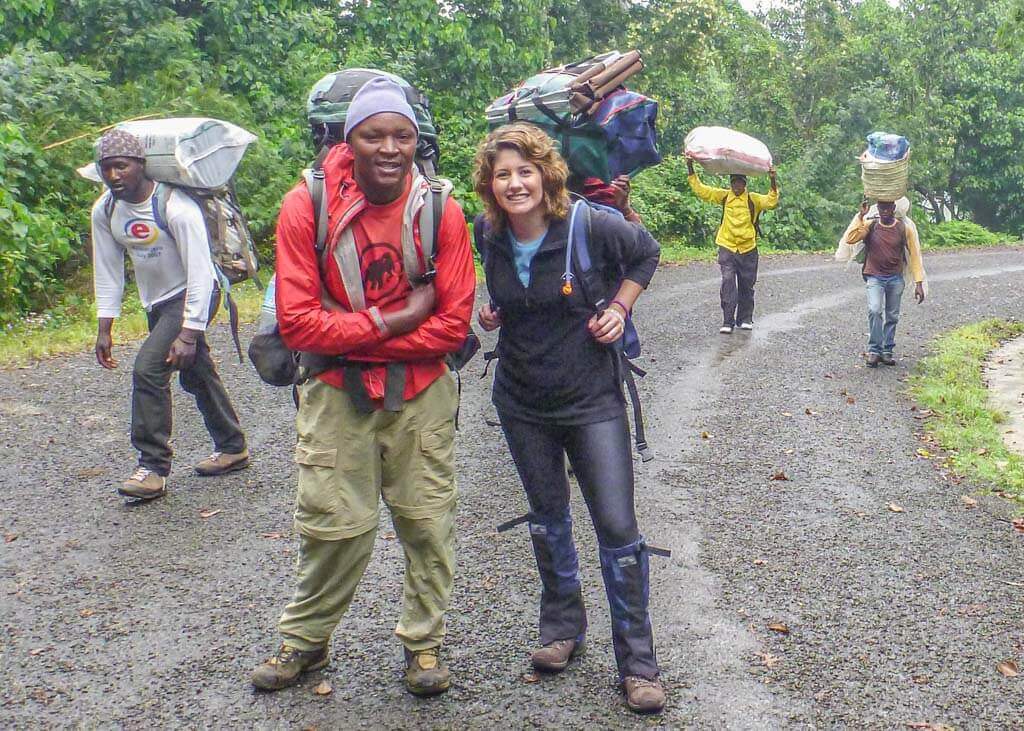
Kilimanjaro packing list: Underwear
- 4 x underwear
- 2 x sports bras (ladies)
Gear for Kilimanjaro
70L Duffle bag/Expedition bag
This duffel bag is where you’ll keep all your hiking gear, sleeping bag, and personal items.
The porters will bring it to your tent after the day’s hike, and you’ll need to repack it again so that they can carry it the following morning.
Confirm with your tour operator whether they provide this duffel bag and a waterproof cover.
Top tip: There’s a weight limit of 15kg for these duffle bags
30-40L Day Pack for Kilimanjaro
I can’t begin to explain how critical a good day pack is for your Kilimanjaro packing list.
It’s where you’ll keep everything from water, tissues, snacks, sunscreen, a camera, and extra layers when you’re trekking between camps.
But choosing a good Kilimanjaro backpack can be slightly tricky!
I recommend this 34l day pack with a waist strap so that the weight rests on your hips and not on your shoulders.
Make sure it has a separate holder for your hydration pack and an outlet for the pipe. Don’t buy one if it doesn’t have this feature!
You’ll thank me on those long trekking days when you’re desperate for water, and the hose is conveniently within arm’s reach.
Also, look out for hidden zips and pockets, which are a great addition.
3L Camelbak / Hydration bladder
A water bladder is an easy and convenient way to store your water in your day pack. No Kilimanjaro packing list is complete without one.
A 3-liter hydration pack is a good size, but make sure it’s a good quality item, as the seal can break if you opt for a cheaper alternative.
Remember, you need to drink at least 3 liters of water every day, which will help your body acclimatize.
Your guides will provide you with clean water so that you can fill your bottles and hydration pack.
1L water bottle
You’ll have 2 to 3 liters of water in your hydration pack, but you should have an extra bottle in your day pack.
Your hydration pack may also freeze on your summit climb, so this bottle is a good backup.
In the evenings, this water bottle can double up as a hot water bottle. It needs to be good quality and able to withstand being filled daily with boiling water.
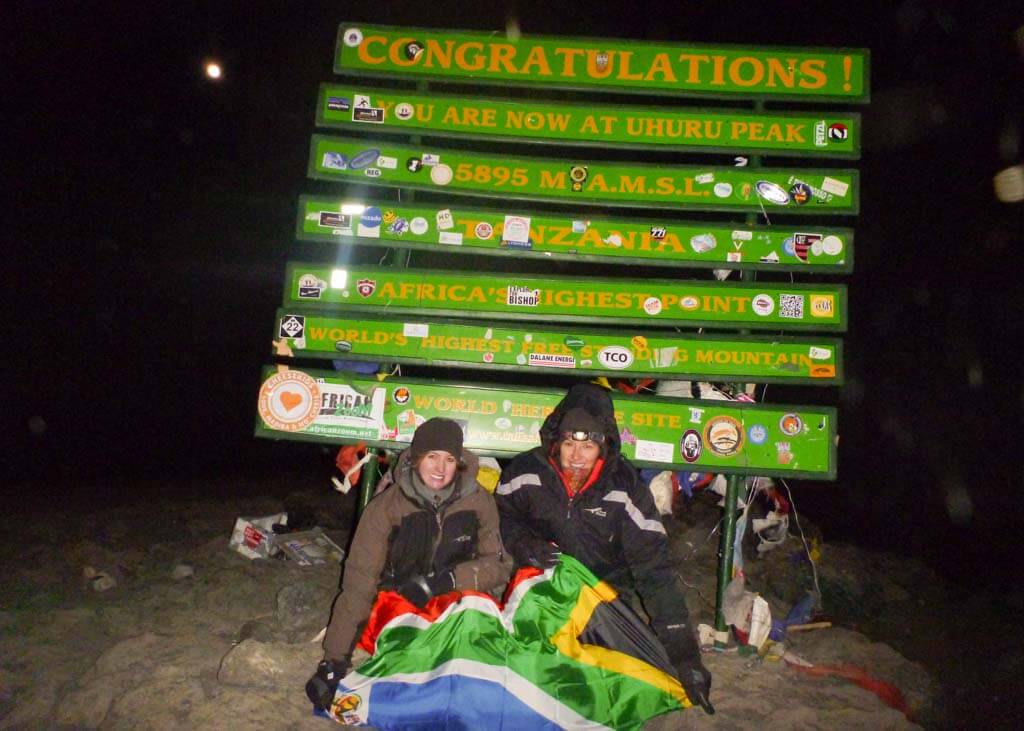
Water purification tablets
Taking water purification tablets is an additional measure. If you’re susceptible to getting sick, perhaps take them with you.
But all the water is boiled by your trekking team before drinking.
Sleeping bag (-5)
You need a good quality sleeping bag for Kilimanjaro to keep you warm in the evenings.
You’ll be camping, and it can get pretty icy as you get to the camps further up.
I highly recommend a 4 season sleeping bag with a rating of -5.
This should be provided by your tour operator, so confirm before buying your own.
1 sleeping bag liner
A sleeping bag liner like this provides an extra layer of warmth in case you get cold at night.
It’s small and light. I used mine every night.
Kilimanjaro equipment list: Accessories
UV protective sunglasses
You’ll need to include a pair of good-quality UV protective sunglasses on your packing list for Kilimanjaro.
I have a pair of these Ray-Bans and love them for hiking. Snow goggles are not necessary!
Headlamp (and spare batteries)
Don’t forget your headlamp for walking around the campsite at night.
You’ll also use it for your summit climb as you start hiking at 1 a.m.
It’s better to buy a headlamp like this that has more than 3 modes so you can dim the brightness depending on where you are.
Trekking poles
Trekking poles are yet another item that some people use; others don’t.
But I recommend you include them on your packing list for Kilimanjaro as they reduce the impact on your knees. They also make those steep sections more bearable, especially on the descent.
It’s important to get durable and lightweight poles. But you don’t need anything fancy. These ones here are perfect.
4 packing cubes (different sizes)
Your duffle bag will be filled with all your clothing, toiletries, and personal items, which you will pack and unpack every day.
This is time-consuming (and even worse when you’re tired, cold, and grumpy!)
These packing cubes are a lifesaver when it comes to organizing your Kilimanjaro packing list, as you can separate your things, making it easier to find what you need when you’re in your tent.
Top tip: If you were thinking of using Ziplock bags to separate your items, think again. Single-use plastic is illegal on the mountain, so bear this in mind when packing for Kilimanjaro.
1 padlock
It’s a good idea to keep your big duffle bag locked when it’s not with you.
A combination lock works best as you don’t need a key. Buy one here.
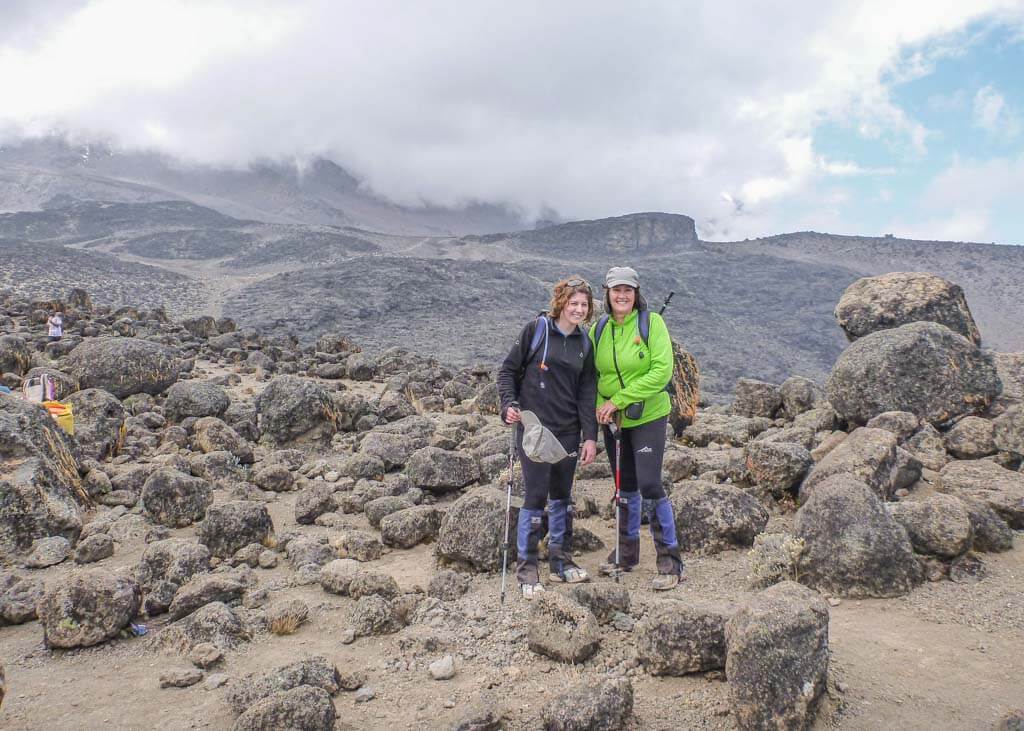
Kilimanjaro packing list: Electronics
20 000 mAH Powerbank for Kilimanjaro
There’s no power along the route. You’ll need to bring a power bank like this to charge your camera and phone.
GoPro with charger and spare battery
If there was ever a need for a GoPro, it’s for your Kilimanjaro trek, especially for those wide-angle shots and selfies!
Mirrorless camera with charger and spare battery
A GoPro works wonders, but the one downfall is the quality of shots at night.
You’ll want a camera that has a flash if you reach the summit in the dark (like I did).
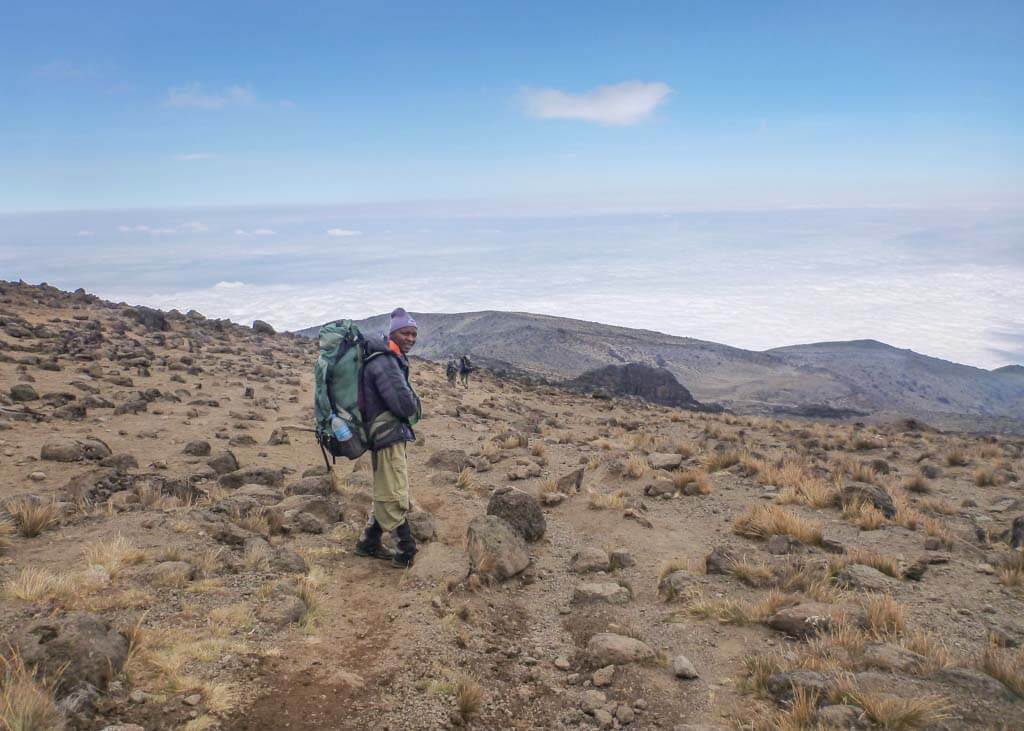
Kilimanjaro packing list: Documents
Travel Insurance
No matter how fit or experienced you are, you need travel insurance.
Hiking at a high altitude has its risks. Acute Mountain Sickness (AMS) is a real thing, and you could seriously injure yourself while trekking.
The only way to get off the mountain during an emergency is to be evacuated by a helicopter. It can be a life and death situation, and if you do not have the funds to cover these emergencies, you will be risking your life.
I used World Nomads for my trip as they cover high altitude trekking of up to 6,000 m – Mt Kilimanjaro sits at 5 895m.
Passport
No less than 6 months before expiry.
Tanzania Visa
You’ll need to visa for Tanzania to climb Mount Kilimanjaro. You can do this on arrival, but it’s best to sort it out before you arrive. Find out more here.
Yellow fever certificate
This is only needed for entering Tanzania if you are coming from (or via) a country where there is yellow fever.
Cash for staff tips
Remember to allocate 10% of the total trip cost for a tip for guides and porters.
Before you start your trek, draw enough money for this.
You’ll hand over tips to your guides and porters on the last day.
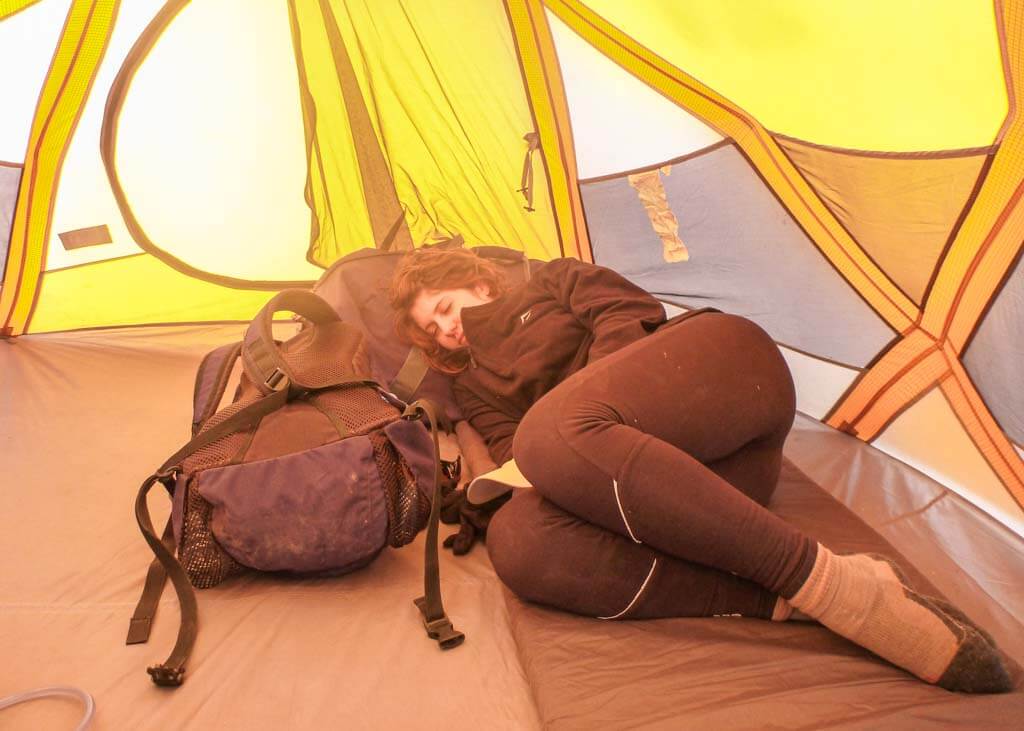
Kilimanjaro packing list: First aid
Your tour company should carry a first aid kit. If they don’t, this is a small first aid kit that has what you need.
You should still packing the below items.
- Headache tablets (paracetamol/ibuprofen/aspirin)
- Throat lozenges
- Vitamin C
- Band-Aids/plasters – bring different shapes and sizes
- Diamox
Should Diamox be on your packing list for Kilimanjaro climb
Diamox is medication that is effective in preventing Acute Mountain Sickness (AMS) and other issues that could occur due to the high altitude.
While Diamox does increase the rate at which your body acclimatizes, it does not guarantee that you will have a successful climb.
People who take Diamox have also complained about a tingling sensation in their hands, like pins and needles.
Diamox is also a diuretic which means you’ll have to urinate often.
This could be a positive thing as it means you’ll be making regular stops which is recommended as a way to acclimatize properly.
You can purchase Diamox in Moshi (without a prescription), but it’s recommended to speak to your doctor back home before taking the medication.
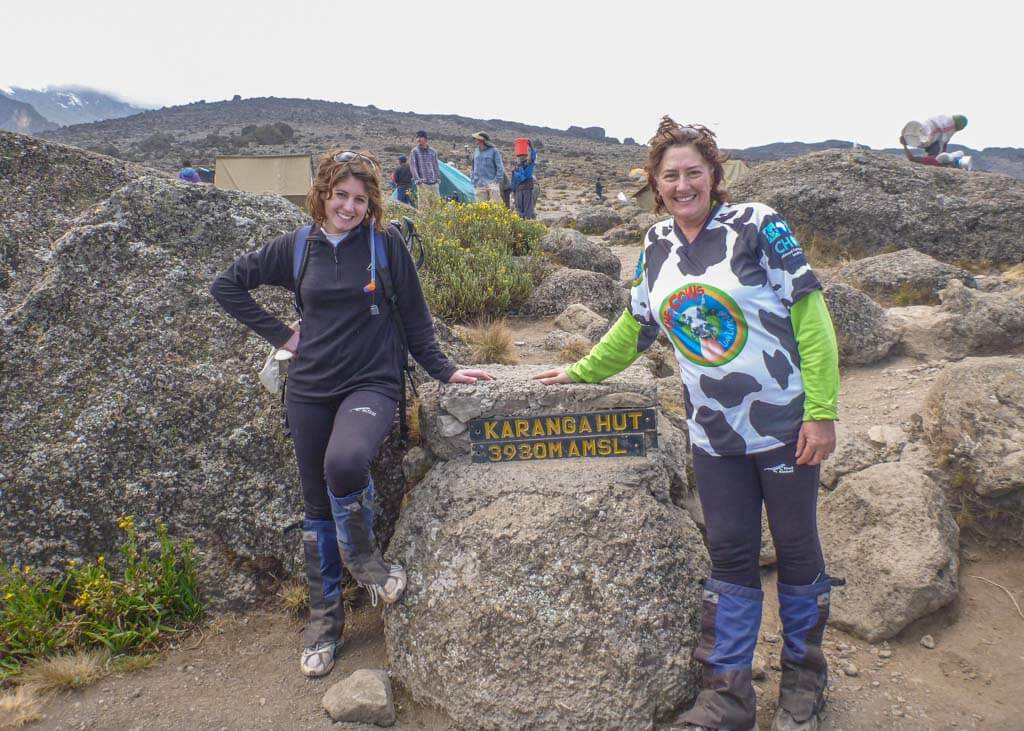
My altitude sickness experience
I debated whether or not to take Diamox for my Kili climb.
I was young, in good health, and had done quite a bit of training.
So, I decided not to.
But then I hit Lava Tower on day 4 (4 630 m), and it went pear-shaped!
I had a splitting headache; I was throwing up, and I couldn’t hold down any food. I never imagined my fit, healthy body to react the way it did!
Luckily for me, after reaching Lava Tower, you descend quite a bit as you go toward your camp for the night.
The next few hours were terrible. I remember feeling so sick, yet I didn’t want to turn back.
Because we were already at a lower altitude from earlier in the day when I was feeling at my worst, my guide monitored my condition before making any big decisions.
By the time we went to bed, I was feeling better, although I didn’t have much of an appetite.
The next morning, I felt strong, and so we continued with our ascend.
Looking back, and after successfully reaching Uhuru Peak, I do believe that it was going back to a lower altitude and resting that allowed me to recover so quickly.
Acclimatizing naturally
The best way to beat altitude sickness is to walk slowly, make regular stops, stay hydrated, and ensure you get enough nutrients. (By the way, you should still be doing all of this even if you take Diamox).
Since summiting Mount Kilimanjaro, I went on a hike to Everest Base Camp, also without taking Diamox.
During this trek in Nepal, many people took Diamox. Some got sick, others didn’t.
That just goes to show that taking Diamox does not mean you won’t suffer from AMS. Because everyone’s body reacts differently to the high altitude.
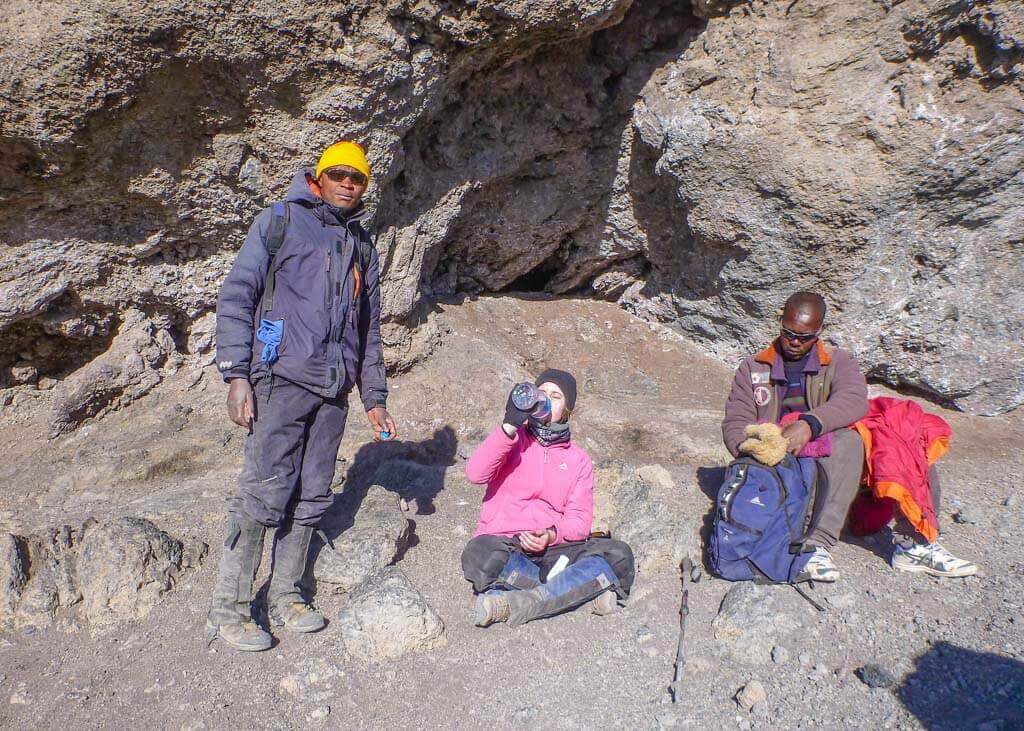
Mt Kilimanjaro gear list: Snacks
Even if you’re not a snack person, pack in a few things to nibble on throughout the trek. Small, one-biter snacks are the way to go.
Here are a few snacks I recommend you pack for Kilimanjaro.
- KitKat, Snickers
- Chewy sweets
- Oreo biscuits
- Granola bars
- Rehydrate
What not to pack for Kilimanjaro
Pillow. Stuff your sleeping bag cover or packing cubes with clothes, and use this as a pillow.
Books. Unless you’re an avid reader, you should save space and leave your books at home.
Tripod. A tripod will just add to the weight of your bag, and many people will be more than happy to take photos for you!
Balaclava. I didn’t wear mine, even though I get incredibly cold! If you’ve packed all the other gear on this list, a balaclava is not needed.
Washing detergent. You won’t be doing any washing, trust me! Air your clothes out every evening, and they’ll be good to go the next day.
Solar changer. With so much cloud cover in the mountains and the time it takes to fully charge the batteries, you’ll barely use them.
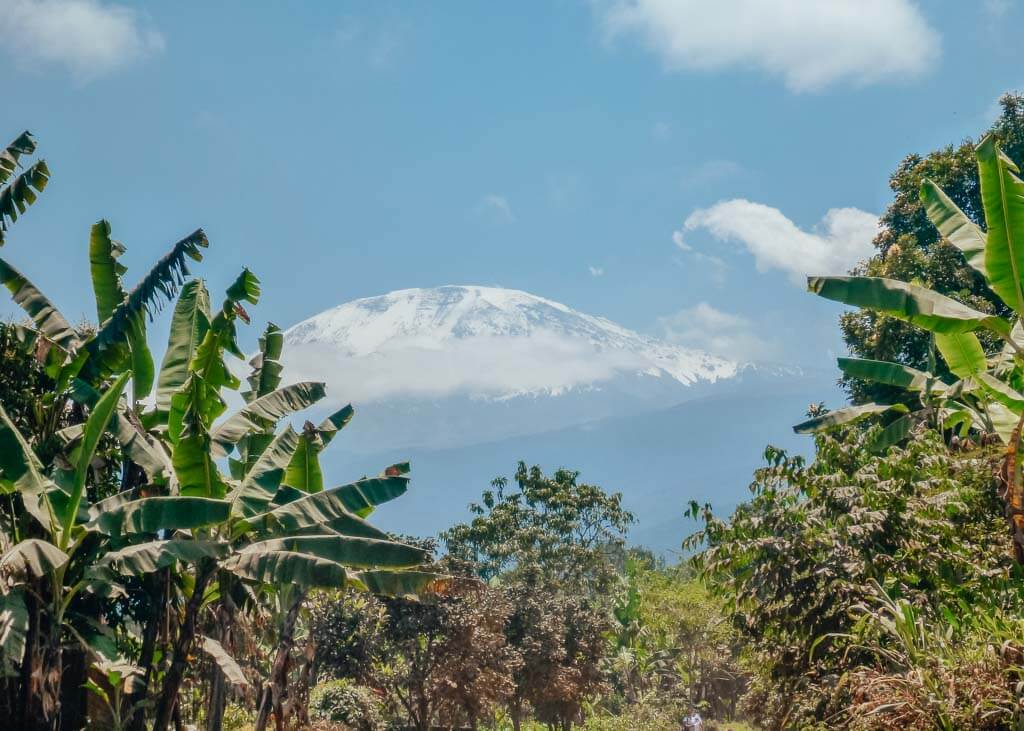
Things to Know About This Packing List for Kilimanjaro
Here are a few important points to keep in mind when packing for Kilimanjaro.
All items on your Kilimanjaro equipment list will be split in two. You’ll wear a small day pack during the day, and porters will carry your large duffle bag (which can’t weigh more than 15kg).
All routes involve camping except for the Marangu Route, where you stay in huts. This means that your porters will carry everything, from your tents to a portable toilet, kitchen, food, water – everything!
And showering? Now might be a good time to remind you that there are no shower facilities on the mountain.
Pack warmly. While the weather in January and February is generally sunny and warm, the temperatures further up the mountain will drop below 0’C no matter what time of year you’re trekking.
It’s all about layering. You’ll need to include three layers on your packing list for Kilimanjaro: A base, middle and outer layer.
Pack a set of non-trekking clothing that you can wear at the campsites. There’s nothing better than putting on something fresh and comfy after a long day of hiking (and after your “wet wipe shower”.)
So, without further ado, here’s absolutely everything you need to pack for Kilimanjaro.

Mt Kilimanjaro Packing List FAQs
Do you shower when climbing Kilimanjaro?
No, there are no shower facilities on the Kilimanjaro climb. All water has to be carried by the porters. Most tour operators will provide you with a bowl of hot water to rinse off your hands and face.
How many wet wipes for Kilimanjaro?
A big pack of 35 wet wipes is enough to pack for Kilimanjaro climb.
What do you wear at night on Kilimanjaro
Because it gets so cold at night, I wore my thermals with a fleece jacket. I also wore my thick buff, beanie and fleece gloves.
Final thoughts on my women’s packing list for Kilimanjaro
Phew – if you reached the end of my Kilimanjaro packing list, congrats!
This is a first-hand account of my experience of gear and other clothing for Kilimanjaro. It can be tricky if you’re trying to stick to a budget but bear in mind that you need to have the correct gear for a successful summit.
Also remember, everyone is different, and no one packing list will suit everything.
Have you been high-altitude climbing? What’s your top tip on what to pack for Kilimanjaro? Let me know in the comments section below.
Planning your next adventure? Check out my other posts!

